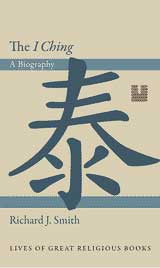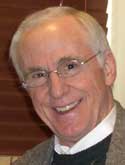How did the most revered book in China’s cultural tradition, the I Ching, a cryptic and once-obscure book, become one of the most widely read and extensively analyzed texts in all of world literature? Rice professor of humanities Richard Smith takes on that question in his new book, “The I Ching: A Biography,” which was published in March by Princeton University Press as part of its “Lives of Great Religious Books” series.
The I Ching originated in China as a divination manual more than 3,000 years ago. In 136 B.C., the work received imperial sanction as a Confucian classic, and in the centuries that followed, the I Ching had a profound influence on the philosophy, religion, art, literature, politics, science, technology and medicine of various cultures throughout East Asia. Jesuit missionaries brought knowledge of the I Ching to Europe in the 17th century, and the American counterculture embraced it in the 1960s.
“The sustained appeal of the I Ching rests primarily in three related areas, all of which apply to many other classic works as well: the intellectual challenges it poses, the psychological insights it encourages and the creative inspiration it affords,” wrote Smith, the George and Nancy Rupp Professor of Humanities and professor of history.
 Smith traces the evolution of the I Ching in China and throughout the world and explains its complex structure, its diverse uses in different cultures and its enduring appeal. He shows how the indigenous beliefs and customs of Japan, Korea, Vietnam and Tibet “domesticated” the text, and he reflects on whether the Chinese classic can be compared to religious books such as the Bible and the Qur’an.
Smith traces the evolution of the I Ching in China and throughout the world and explains its complex structure, its diverse uses in different cultures and its enduring appeal. He shows how the indigenous beliefs and customs of Japan, Korea, Vietnam and Tibet “domesticated” the text, and he reflects on whether the Chinese classic can be compared to religious books such as the Bible and the Qur’an.
Smith also looks at how the I Ching came to be published in dozens of languages, which provided insight and inspiration to millions worldwide, including such ardent admirers in the West as Leibniz, Carl Jung, Philip K. Dick, Allen Ginsberg, Hermann Hesse, Bob Dylan, Jorge Luis Borges and I.M. Pei.
The I Ching offers “opportunities for the comparative study of the lives of great religious books — how they came to be born, how they evolved and how they traveled across space and time,” Smith wrote. “By engaging in such comparisons, we will not only learn more about other cultures; we will also assuredly learn more about ourselves.”



Leave a Reply